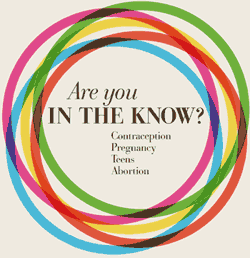2008 state-level teen pregnancy data now available

Aliyev Alexei Sergeevich/ShutterstockTeen pregnancy rates declined steadily in all 50 states between 1988 and 2005. However, between 2005 and 2008, the teen pregnancy rate decreased by 5% or more in 7 states, while increasing by 5% or more in 16 states. While these short-term increases are troubling, recent evidence suggests that teen pregnancy rates will continue their long-term declines. The highest teen pregnancy rates were found in New Mexico (93 per 1,000 women aged 15–19), followed by Mississippi, Texas, Nevada, Arkansas and Arizona. The lowest rates were in New Hampshire (33 per 1,000), Vermont, Minnesota, North Dakota and Massachusetts…more
In Uganda, slow pace in scaling up access to reproductive health care services costs thousands of lives and billions of shillings

Andrew Aitchison/In Pictures/CorbisAccording to a new Guttmacher report, one in three sexually active women in Uganda, both married and unmarried, want to avoid pregnancy but are not using a method of contraception. Only 26% of married women and 38% of unmarried women in the country use a modern method, and more than half of all pregnancies are unintended…more
New rules aim to find workable compromise for contraceptive coverage guarantee
The Obama administration on Friday proposed new rules clarifying how women covered by most private health plans will have contraceptive coverage without cost-sharing as guaranteed under the Affordable Care Act (ACA), while addressing objections by some religious employers. The new rules appear to be largely consistent with what the administration had previously outlined, providing an exemption for a narrow group of religious employers closely tied to houses of worship and an accommodation for a broader group of self-declared religious nonprofit organizations...more
Also see our video on the benefits of contraceptive use.
In Ghana, inequities in access to safe abortion services keep unsafe abortion rates stubbornly high

Carl & Ann Purcell/CORBISA new study by the Guttmacher Institute found that in Ghana, a woman's socioeconomic status largely determines how safe her abortion will be. While middle- and upper-income women in urban areas are more likely than other women to have an abortion, women who are young, poor or without support of a partner are at greatest risk of having an unsafe abortion and experiencing injury or death…more
Call for nominations: The 2013 Darroch Award
The Darroch Award, sponsored by the Guttmacher Institute, recognizes an emerging leader who is a researcher in the field of sexual and reproductive health, where scientific evidence is essential to guiding the policies and programs of the future.
The award honors Jacqueline E. Darroch, Ph.D., whose three decades of directing research exemplified rigorous and innovative work in this field and commitment to the practical application of research to policy and programs. The award aims to recognize and stimulate such work.
The deadline for nominations is May 17, 2013. Click here to download a nomination form. Click here for more information about the Darroch Award.
Roe at 40: New infographics illustrate key facts about abortion
Marking the 40th anniversary of Roe v. Wade, the Guttmacher Institute has created a series of five infographics illustrating key facts about abortion in the United States. These graphics aim to ensure that the national debate on abortion is guided by facts, not misinformation. Click here to see the full series. We encourage you to use these graphics and share them with your friends, family and colleagues.
Guttmacher launches Pinterest page
The Guttmacher Institute can now be found on Pinterest, the popular image-based social media Web site. Check out our page for graphics and images on sexual and reproductive health issues, which are categorized into pin boards ranging from induced abortion in the United States to international family planning services. And please be sure to explore the board commemorating the 40th anniversary of the landmark Roe v. Wade decision, titled “40 Years of Safe, Legal Abortion in the United States.” You can follow our Pinterest page here.
2012 saw second-highest number of abortion restrictions ever
 In 2012, 42 states and the District of Columbia enacted 122 provisions related to reproductive health and rights. One-third of these new provisions, 43 in 19 states, sought to restrict access to abortion services. Although this is a sharp decrease from the record-breaking 92 abortion restrictions enacted in 2011, it is the second highest number of new abortion restrictions passed in a year...more
In 2012, 42 states and the District of Columbia enacted 122 provisions related to reproductive health and rights. One-third of these new provisions, 43 in 19 states, sought to restrict access to abortion services. Although this is a sharp decrease from the record-breaking 92 abortion restrictions enacted in 2011, it is the second highest number of new abortion restrictions passed in a year...more
In India, preference for sons undermines desire for smaller families, slowing decline in population growth

Maxim_Dianov/iStockphotoDespite a strong family planning program and a growing desire for smaller families, women in India often have more children than they would like because of a longstanding preference for sons over daughters. A new study exploring this issue finds that continued childbearing driven by son preference accounts for 7% of all births in the country…more
State facts about unintended pregnancy: New tool provides comprehensive overview
For women and families, births resulting from unintended pregnancies have been linked to adverse maternal and child health outcomes and myriad social and economic challenges. Births stemming from unintended pregnancy are also costly to the federal and state governments. To provide a one-stop resource and comprehensive overview, our new tool offers more than two dozen state-specific indicators related to unintended pregnancy…more
Also see our Medicaid state fact sheets.
New video: Evidence in Action
Our new video describes how the Institute's unique model of research and action makes an impact on policies and programs worldwide. Please watch the video and consider making a year-end donation to Guttmacher…more
Everything old is new again—debunked criticism of Guttmacher methodology resurfaces
In the December 2012 issue of the International Journal of Women’s Health, Elard Koch, of Chile's Catholic University of the Most Holy Conception, and colleagues criticize a Guttmacher Institute methodology for estimating the incidence of induced abortions and resulting complications in countries where the procedure is legally restricted. The critique largely recycles misleading arguments previously made by Koch which Guttmacher comprehensively rebutted in July 2012… more (English) (Spanish)
The December 2012 issue of Perspectives on Sexual and Reproductive Health is now available
The December 2012 issue of Perspectives on Sexual and Reproductive Health is now available online. Click here to find out what is in this issue.
Coercion in reproductive decision making occurs in many settings—and in both directions
Forcing a woman to terminate a pregnancy she wants is wrong, and so is forcing her to continue a pregnancy that she does not want, concludes a new Guttmacher Institute policy analysis. Each case violates women’s basic human rights: the right to decide freely whether and when to bear a child and the right to have that decision respected by the government...more
New Video: Abortion Worldwide
In the developing world, an estimated 40 million abortions will take place in 2012. Most of these procedures will be clandestine and unsafe, taking a terrible toll on women’s lives. This video presents key evidence on abortion worldwide to help ensure that the global debate on abortion is informed by facts and not misinformation...more
Spanish and French versions of this video and the accompanying summary of key points are also available.
Full video transcripts are available in English, Spanish and French.
Women use contraception to better achieve their life goals

Mark Bowden/iStockphotoA new study confirms what many have long believed to be true: women use contraception because it allows them to better care for themselves and their families, complete their education and achieve economic security. These findings further document the value of ensuring women’s continued and increased access to a full range of contraceptive services and methods…more
Also see our video on the benefits of contraceptive use in the United States in English and Spanish.
Contraception editorial analyzes impact of Supreme Court’s ACA decision on reproductive health
The U.S. Supreme Court's June 28 ruling upholding the Patient Protection and Affordable Care Act (ACA) helps ensure that tens of millions of Americans will be able to receive comprehensive health coverage, including strong coverage of reproductive health services (with the notable exception of abortion). However, the Court’s ruling that states cannot be compelled to go along with the ACA's Medicaid expansion potentially jeopardizes coverage for millions of the poorest Americans. Beyond the uncertainty surrounding Medicaid, additional legal, political and technical challenges loom large, according to a Guttmacher editorial in the journal Contraception...more
Improving contraceptive services in Ethiopia would save lives and reduce health care costs

© Michael Bailey, courtesy PhotoshareThe first national estimate of the direct cost of treating postabortion complications in Ethiopia shows the country spent US$7.6 million in 2008 to provide postabortion care, an average of $36 per woman treated. The study, conducted by the Guttmacher Institute, found that every dollar spent on family planning services would save $6 in postabortion care services…more
Little progress made in meeting demand for contraception in the developing world

©WorldViewImages.comA new study by the Guttmacher Institute and the United Nations Population Fund finds that the number of women in developing countries who want to avoid pregnancy but are not using modern contraceptives declined only slightly between 2008 and 2012. However, in the 69 poorest countries—where 73% of all women with unmet need for modern contraceptives reside—the number actually increased, from 153 million to 162 million women. The report also documents the dramatic benefits that would result if the demand for modern contraception were met...more
Are you IN THE KNOW?
 The Guttmacher Institute is pleased to launch Are you IN THE KNOW?, a new set of resources designed to inform a broad range of audiences about contraception, pregnancy, abortion and teen health in a simple, compelling and fun format. The Institute has long worked to increase public awareness about sexual and reproductive health issues and counter misinformation with sound scientific evidence. Are you IN THE KNOW? builds on those efforts by covering topics such as the frequency of premarital sex in America, the incidence of abortion in the United States and globally, and the many positive effects of comprehensive sexuality education, in an accessible way...more
The Guttmacher Institute is pleased to launch Are you IN THE KNOW?, a new set of resources designed to inform a broad range of audiences about contraception, pregnancy, abortion and teen health in a simple, compelling and fun format. The Institute has long worked to increase public awareness about sexual and reproductive health issues and counter misinformation with sound scientific evidence. Are you IN THE KNOW? builds on those efforts by covering topics such as the frequency of premarital sex in America, the incidence of abortion in the United States and globally, and the many positive effects of comprehensive sexuality education, in an accessible way...more
















